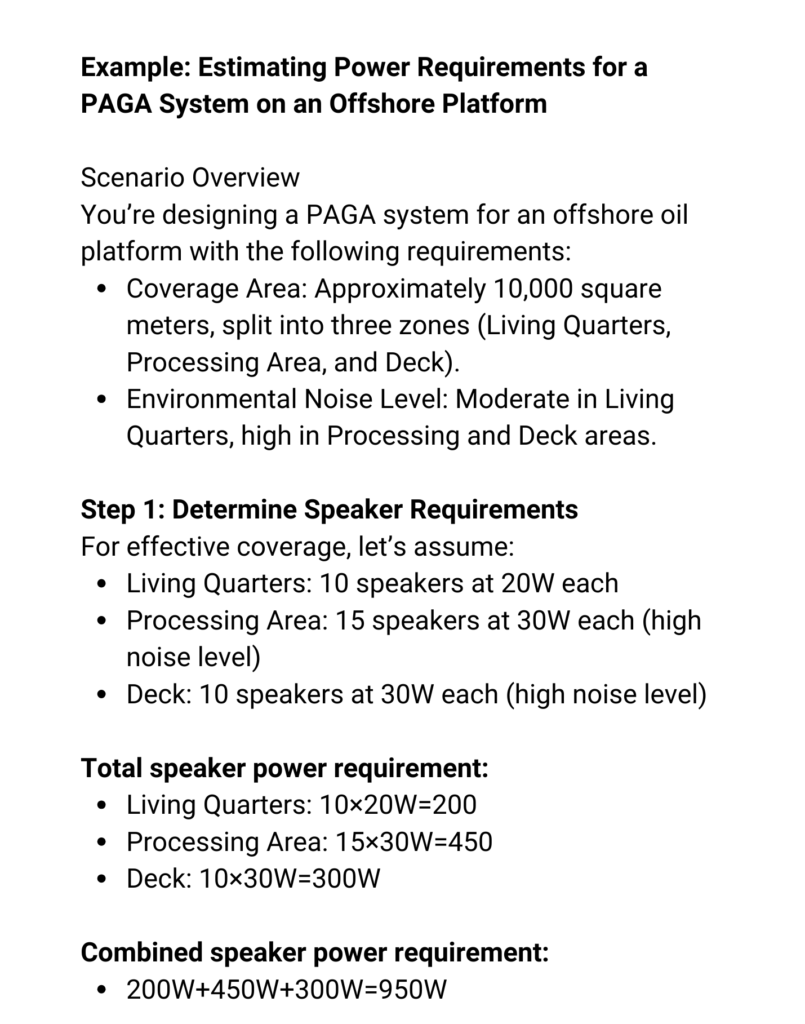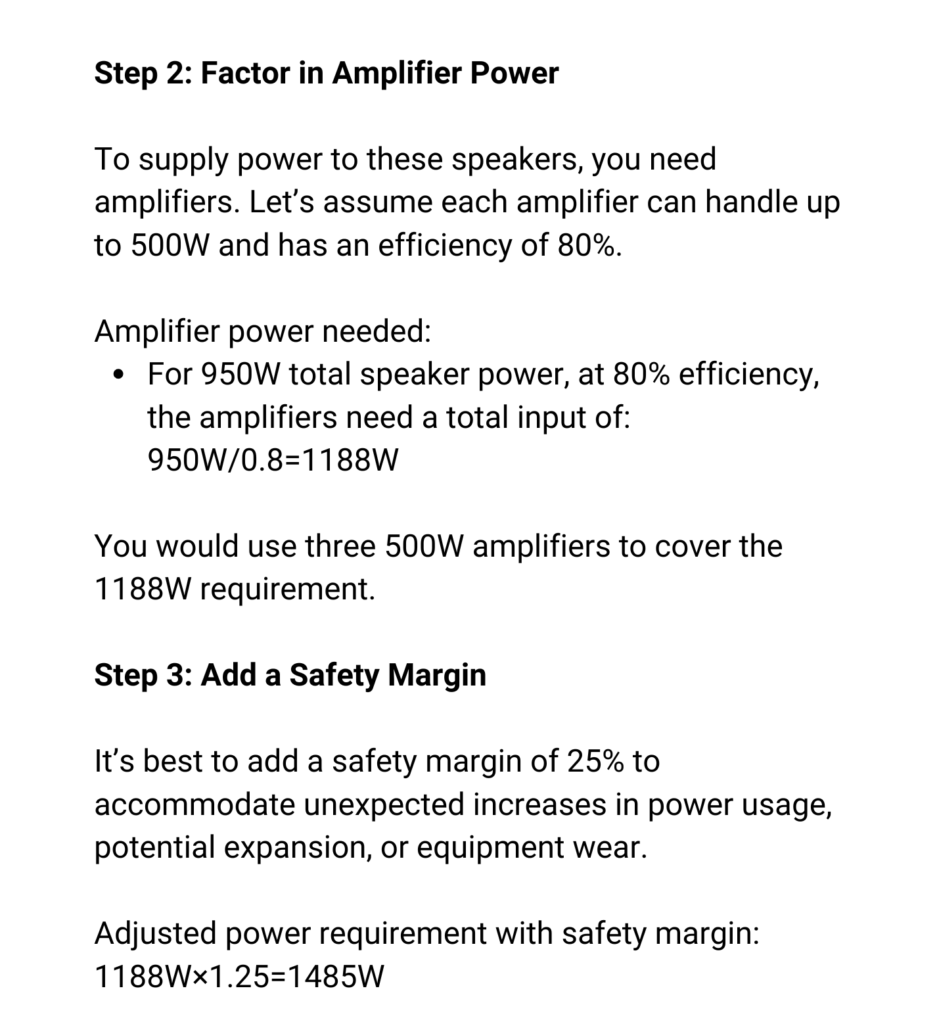Here are 5 step on how to estimate the power requirements for a PAGA system.
In high-stakes industrial environments—such as oil and gas facilities or FPSOs—effective communication and emergency alerts are crucial. A well-designed Public Address and General Alarm (PAGA) system is central to this, but for it to function reliably, understanding its power requirements is essential.
This blog will guide you through the steps to estimate the power needed for a PAGA system to ensure uninterrupted performance.
1. Understanding PAGA System Components and Power Needs
Central Control Unit (CCU)
The core of the PAGA system, handling the system’s input and output signals. Consider its power ratings, usually specified by the manufacturer.
Amplifiers
These power the loudspeakers and are a significant factor in overall power requirements. The required power depends on the number of amplifiers and the wattage of each.
Speakers and Loudspeakers
Speakers, placed strategically across the site, draw power in relation to their wattage. Typically, a PAGA system may use a mix of high-power (30-50W) and lower-power speakers.
Back-Up Power Source (UPS/Batteries)
Speakers, placed strategically across the site, draw power in relation to their wattage. Typically, a PAGA system may use a mix of high-power (30-50W) and lower-power speakers.
2. Determine the Area of Coverage
Environmental Assessment
Establish how large an area the PAGA system will cover and consider the environmental conditions, such as noise levels.
Speaker Placement and Density
For clear sound across high-noise zones, more speakers are required, which adds to the power demand.
Wattage per Zone
Define each zone’s power requirements based on coverage area, speaker type, and ambient noise.
3. Calculating Power for Amplifiers and Speakers
Speaker Power Ratings
Multiply the number of speakers by their wattage. For example, a zone with ten 30W speakers would require 300W.
Amplifier Efficiency and Power Factor
Consider the amplifier’s efficiency, usually between 70-90%. Divide the speaker wattage by the amplifier’s efficiency to get a reliable power estimate.
4. Adding a Safety Margin
Extra Capacity
Always add a margin, typically around 20-25%, to handle unexpected power surges or system expansions.
Redundancy for Critical Systems
Some PAGA systems, especially in offshore and high-risk environments, include redundant circuits for fail-safe operations. Ensure enough capacity to power redundancy features.
5. Factoring in UPS and Battery Backup
Determine Load and Duration Needs
For backup power, calculate how long the system should operate in a power outage. Multiply the power requirement by the time duration to size the UPS/battery capacity.
Sizing Battery Banks for Longer Back-Up
If using batteries, calculate the ampere-hour (Ah) rating required to sustain the PAGA system for the desired duration.
6. Conclusion
Add up the power ratings of all components, including CCU, amplifiers, speakers, and backup systems. Manufacturers often provide specific guidance on power requirements per component, which helps refine your estimate



Get the Right Team
And there you have it, 5 steps on how to estimate the power requirements for a PAGA system.
Get our expert engineers and technicians for large scale projects, to accurately calculate your PAGA system power requirements, together with design, configuration, installation, commissioning and coverage studies!
You can also browse our dedicated site for sound systems for more information: https://acoustechno.com/










